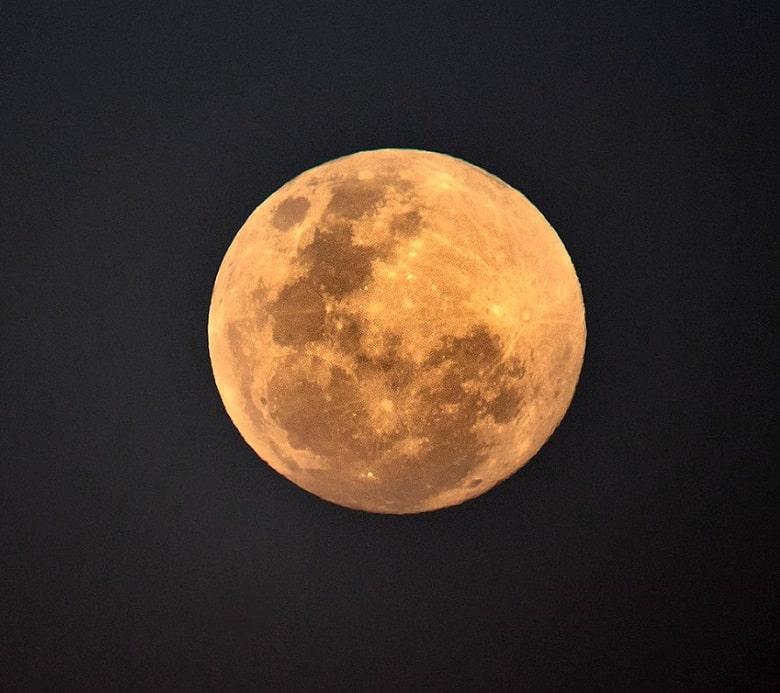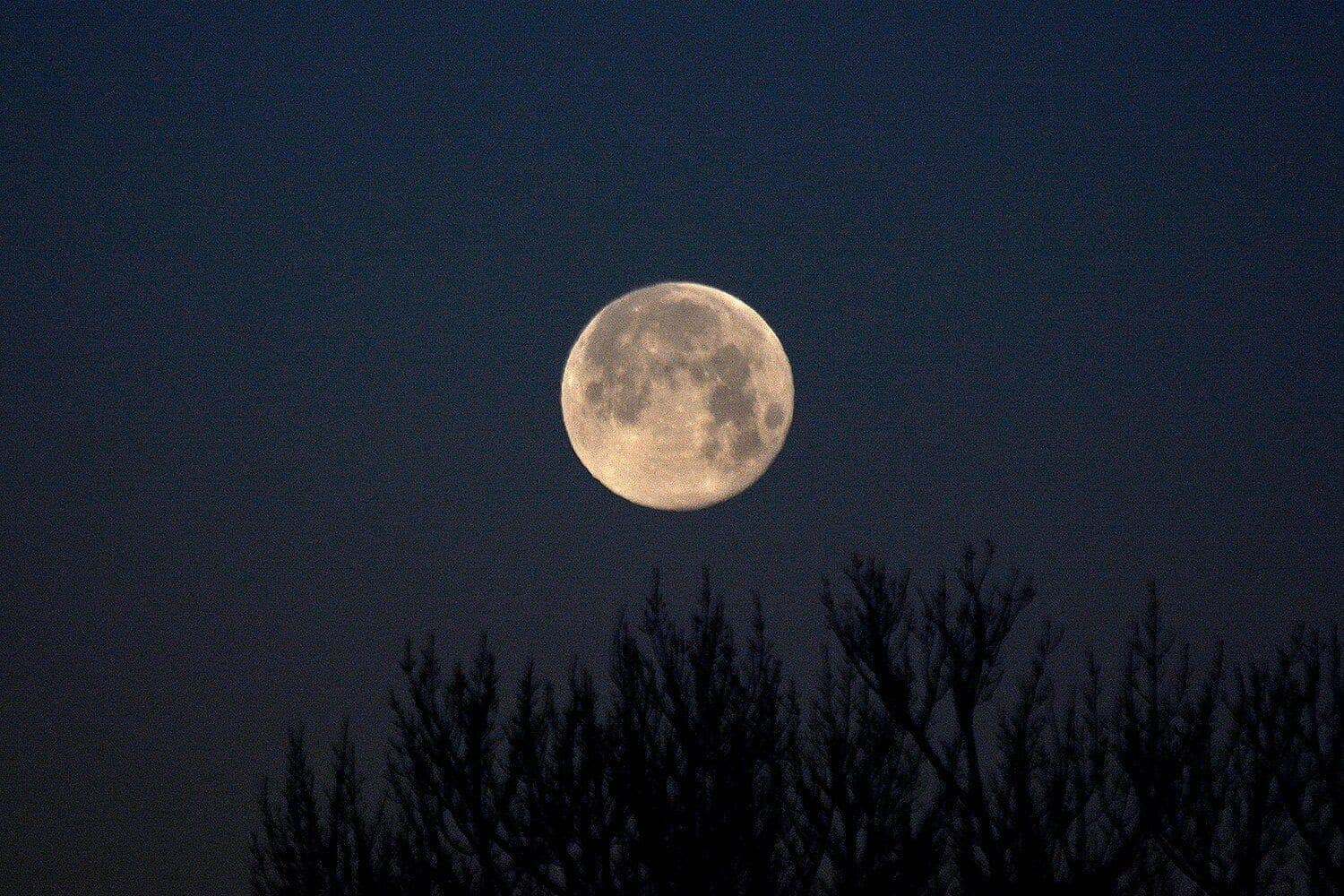The July Full Moon, also known as the Buck Moon, is commonly associated with the buck’s antlers since this is the period when they emerge from a buck’s forehead.

The ancients would associate a name for a Full Moon based on what they witnessed during that period of time. For example, both deer and bulk males shed their antlers during July each year, and new ones begin to grow. Many different deer species exist in the US and Europe, where the traditional full moon name of July originated.
Let’s take a look at some other names for the July Full Moon.
Other July Full Moon Names
The July Full Moon has many other names apart from Buck Moon. In some regions, it is known as the Thunder Moon, since thunderstorms are common during summer.
The Anglo-Saxons named the July Moon as Hay Moon after the hey harvest period, which often occurred during July. They would also call this Moon the Wort Moon, since they gathered herbs (worts), dry them, and then use them as spices or remedies.

Some other names for the July Full Moon, as noted in the Farmer’s Almanac, are Elk Moon, Summer Moon, Berry Moon, Feather Moulting Moon, Halfway Moon, Raspberry Moon, Salmon Moon, or Moon When the Chokecherries are Ripe. In the Southern Hemisphere, where seasons are switched, the July Full Moon is known as Wolf Moon, Old Moon, or Ice Moon.
Is There a Full Moon in July 2020?
A Full Moon occurs every month. In 2020, the Full Moon in July occurred on the 5ft. It appeared opposite the Sun at 12:44 am EDT. This Buck Moon also suffered a partial penumbral eclipse as the Moon’s northern edge passed through the Earth’s partial shadow, which was visible from most of North America.

The Full Moon appeared as such for around three days; it began from Friday and lasted until Monday morning. Practically, we witnessed a Full Moon weekend.
On What Date is the Buck Moon in 2021?
In 2021, the Buck Moon will occur on the 24th of July. Here is a list of the other Full Moon’s which will occur in 2021:
- 28th of January – Full Wolf Moon
- 27th of February – Full Snow moon
- 28th of March – Full worm moon
- 27th of April – Full Pink Moon
- 26th of May – Full Flower Moon
- 24th of June – Full Strawberry Moon
- 24th of July – Full Buck Moon
- 22nd of August – Full Sturgeon Moon
- 20th of September – Full Corn moon
- 10.20st of October – Full Hunter’s Moon
- 19th of November – Full Beaver Moon
- 19th of December – Full Cold Moon
Unlike in 2020, where we witness thirteen full moons, we will witness only twelve full moons in 2021. 2020 seems pretty much on steroids from every aspect.
What Does a Buck Moon Mean Spiritually?
A Buck Moon has some great spiritual meaning since July represents the peak of summer. When we think about summer, we often associate it with heat, but let’s face it, it has quite a laid-back vibe.
Because of this, July’s Full Moon is traditionally associated with easiness, calmness, but also with maturity and concentration. Summer isn’t always a laid-back period; it might involve some hard work as well.

The Full Moon of July is also associated with progress and stability. There are some more spiritual meanings associated with the Buck Moon, and if you wish to learn about them, read about it in the did you know section.
What Is the Moon Schedule For 2020?
The Moon schedule for 2020 is awesome since we will witness 13 full moons, 3 of them being supermoons, and a fourth being a full moon eclipse. This is the list for all the thirteen Full Moons which will occur in 2020, with the Supermoons and the Lunar eclipse included:
- January 10 – 2:21 pm / 14:21 Wolf Moon Lunar Eclipse
- February 9 – 2:33 am / 02:33 Snow Moon
- March 9 – 1:48 pm / 13:48 Super Worm Moon
- April 7 – 10:35 pm / 22:35 Super Pink Moon
- May 7 – 6:45 am / 06:45 Flower Supermoon
- June 5 – 3:12 pm / 15:12 Strawberry Moon
- July 5 – 12:44 am / 12:44 Buck Moon
- August 3 – 11:59 am / 11:59 Sturgeon Moon
- September 2 – 1:22 am / 01:22 Corn Moon – Harvest Moon
- October 1 – 5:05 pm / 17:05 Hunter’s Moon
- October 31 – 9:49 am / 09:49 Hunter Or Harvest Moon
- November 30 – 4:30 am / 04:30 Beaver Moon
- December 29 – 10:28 pm / 22:28 Cold Moon
Did you know?
- The most famous tribe responsible for the July Moon being named the Buck Moon, is the Algonquin tribe.
- Some Europeans named the July Full Moon as the Rose Moon.
- The Hindus know the July Full Moon as Guru Full Moon – Guru Purnima – it is often celebrated as an event where people clear their minds and honor the guru or spiritual master.
- Buddhists know the Jully Full Moon as the Dharma Day, Asalha Puha, or Esala Poya. The Theravada Buddhism associated and celebrate the July Full Moon as Buddha’s first sermon.
- The July Full Moon is in the middle of the fifth month of the Chinese calendar and Tammuzin, the Hebrew calendar. In the Islamic calendar, the July Full Moon occurs in the middle of Dhu al-Qidah, one of the four sacred months, and thus warfare is prohibited.
- The Apollo and Luna programs returned a total of 382kg of rock samples from the Moon. These rocks are studied even today, and they provide most of our knowledge of the Moon.
- Most of the Moon’s surface rocks are dated to be between 4.6 and 3 billion years old. Such samples reveal many details about the early history of our Solar System.
- Many believed that the Moon formed after our Earth suffered a collision with a Mars-sized object. A big chunk of Earth flew into space and was later shaped and captured by Earth’s gravity.
- Our Moon doesn’t have an authentic atmosphere, nor a magnetic field. Because of this, the Moon’s surface is directly exposed to the solar wind. This presents a problem if we are to settle the Moon.
- On Earth, we experience earthquakes; however, the Moon has moonquakes. These geological events last longer on the Moon, but they are far less powerful.
Sources:
Image Sources:
- https://images.squarespace-cdn.com/content/57114ada746fb968add34a00/1529506283552-W5AEH89HVSN12P796U6L/buck-moon.jpg?content-type=image%2Fjpeg
- https://i2.wp.com/www.informationpalace.com/wp-content/uploads/2020/07/Annotation-2020-07-02-123536-Copy-min.jpg?resize=780%2C693&ssl=1
- https://439370-1380375-raikfcquaxqncofqfm.stackpathdns.com/wp-content/uploads/2020/07/07add242-27b4-59a5-aec0-d93897b58fbd.jpg
- https://www.wane.com/wp-content/uploads/sites/21/2020/04/moon.jpg?w=1920&h=1080&crop=1
